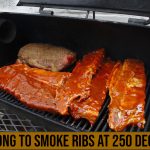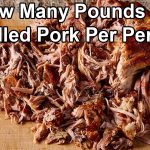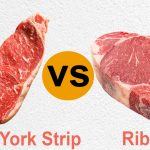As you can see, there are many factors to consider when deciding how long to bake salmon at 400 degrees Fahrenheit. The type of fish, the thickness of the fillet, and your desired level of doneness all play a role in determining the perfect baking time. However, armed with this information, you should be able to put together a delicious and healthy meal that your whole family will enjoy. So go ahead and give it a try!
Types Of Salmon
There are many different types of salmon, and each one has its own unique flavor and texture. For this reason, it’s important to choose the right type of fish for your meal. Here are some of the most popular types of salmon:
Chinook Salmon: Also known as king salmon, this is the largest and most popular type of salmon. It has a firm texture and a rich, oily flavor.
Sockeye Salmon: This type of salmon is smaller than chinook, but it is still very flavorful. It has a bright red flesh and a slightly sweet taste.
Coho Salmon: Coho salmon is similar in size to sockeye, but it has a lighter flavor. Its flesh is also pinker in color.
Atlantic Salmon: Atlantic salmon is the most common type of farmed salmon. It has a mild flavor and a softer texture.
How long to bake Salmon at 400?
If you are baking your salmon at 400 degrees, the general rule of thumb is to cook it for about 10-12 minutes per inch of thickness. So, if your salmon is 1-inch thick, you would cook it for about 10-12 minutes. If it is 2-inches thick, you would cook it for about 20-24 minutes. And so on.
Of course, this is just a general guideline and your actual cooking time may vary depending on a number of factors, including the type and quality of your salmon, the temperature of your oven, and whether or not you are covering the fish while it cooks. To be on the safe side, it’s always best to check your salmon periodically to make sure it is cooked through.
How long to bake Sockeye Salmon at 400
The average time to bake Sockeye Salmon at 400 degrees is 20-25 minutes. However, cooking times may vary depending on the thickness of your salmon fillets. We suggest using a kitchen timer to ensure that your salmon is cooked through.
How Long To Bake Salmon At 400 In The Air Fryer?
The air fryer is a kitchen appliance that many people are using to cook food faster and with less fat. Air fryers work by circulating hot air around the food, which cooks the food and gives it a crispy outside.
So, how long should you cook salmon in the air fryer? The answer depends on the thickness of your salmon fillets. For thinner fillets, we recommend cooking for 3-4 minutes per side. For thicker fillets, we recommend cooking for 5-6 minutes per side. Again, use a kitchen timer to ensure that your salmon is cooked through.
How To Cook Salmon In The Microwave?
We do not recommend cooking salmon in the microwave, as it can dry out the fish and make it tough. If you must cook salmon in the microwave, we recommend using the defrost setting on your microwave, and cooking for no more than 2 minutes at a time. Be sure to check the salmon frequently, and stop cooking as soon as the fish is cooked through.
How To Cook Salmon On The Stove?
Cooking salmon on the stove is a quick and easy way to make a delicious meal. We recommend using a simple pan-searing method to cook your salmon. First, heat a small amount of oil in a skillet over medium heat. Next, place your salmon fillets in the skillet skin-side down, and cook for 3-4 minutes per side. Salmon is cooked through when it flakes easily with a fork.
Once your salmon is cooked through, you can serve it with your favorite sides. We love to pair salmon with roasted vegetables or a simple salad. Enjoy!
How To Know When Salmon Is Done?
The best way to know if salmon is done is to use a kitchen timer. cooking times may vary depending on the thickness of your salmon fillets, but we recommend cooking for 20-25 minutes at 400 degrees. Salmon is done when it flakes easily with a fork. You can also check the internal temperature of your salmon with a meat thermometer. Salmon is cooked through when it reaches an internal temperature of 145 degrees.
What To Serve With Salmon?
There are many delicious things that you can serve with salmon. Some of our favorites include roasted vegetables, quinoa, rice, and potatoes. We also love to top our salmon with a simple lemon dill sauce. This easy recipe only requires four ingredients: lemon juice, butter, dill, and salt. Simply combine all of the ingredients in a small saucepan over low heat, and cook until the butter is melted and the sauce is hot. Spoon the sauce over your salmon, and enjoy!
How Long Does Salmon Last In The Fridge?
Cooked salmon will last in the fridge for 3-4 days. We recommend storing cooked salmon in an airtight container in the fridge. When reheating, be sure to heat until the salmon is hot all the way through. Do not reheat more than once.
How Long Does Salmon Last In The Freezer?
Cooked salmon will last in the freezer for 2-3 months. We recommend storing cooked salmon in an airtight freezer-safe container or bag. When reheating, be sure to heat until the salmon is hot all the way through. Do not reheat more than once.
How To Bake Salmon at 400 Degrees Fahrenheit
The best way to bake salmon is at 400 degrees Fahrenheit. This will ensure that your salmon is cooked through, while also keeping it moist and flavorful. We recommend cooking salmon for 20-25 minutes at 400 degrees. Salmon is done when it flakes easily with a fork. You can also check the internal temperature of your salmon with a meat thermometer. Salmon is cooked through when it reaches an internal temperature of 145 degrees.
How Thick Is Your Fillet?
The thickness of your salmon fillet will also play a role in determining how long to bake it. Here are some general guidelines:
-For thin fillets (less than 1 inch thick), bake for 10-12 minutes.
-For medium-thick fillets (1-2 inches thick), bake for 12-14 minutes.
-For thick fillets (more than 2 inches thick), bake for 14-16 minutes.
Desired Level Of Doneness
Finally, you’ll need to decide how well done you want your salmon to be. Here are some guidelines:
-For rare salmon, bake for 10 minutes.
-For medium salmon, bake for 12 minutes.
-For well-done salmon, bake for 16 minutes.
Remember, these are just guidelines. The best way to know when your salmon is cooked to perfection is to use a meat thermometer. Insert the thermometer into the thickest part of the fillet and check that the internal temperature is at least 145 degrees Fahrenheit.
How To Choose Salmon
When shopping for salmon, you’ll want to look for fillets that are pink in color with a firm texture. Avoid salmon that looks dull or has brown spots. You’ll also want to make sure that the salmon doesn’t have a strong fishy smell. If it does, it’s probably past its prime.
Wild-caught salmon is typically considered to be the best quality, but it can also be more expensive. Farm-raised salmon is a good option if you’re on a budget. Just be sure to read the labels carefully to make sure that the farm-raised salmon meets your standards for quality and sustainability.
When buying frozen salmon, look for packages that are tightly sealed and free of ice crystals. Avoid packages that are leaking or have a lot of ice buildup.
How To Prepare Salmon
The best way to prepare salmon is to season it with a little salt and pepper, and then bake it in the oven at 400 degrees Fahrenheit. You can also pan-fry, grill, or broil salmon. If you’re going to fry or grill your salmon, we recommend marinating it first in a mixture of oil, lemon juice, and your favorite herbs and spices. This will help to keep the fish moist and prevent it from sticking to the grill or pan.
When cooking salmon, be sure not to overcook it. Salmon is best when cooked medium-rare to medium. Overcooked salmon can be dry and tasteless.
How To Store Salmon
Cooked salmon will last in the fridge for 3-4 days. We recommend storing cooked salmon in an airtight container in the fridge. When reheating, be sure to heat until the salmon is hot all the way through. Do not reheat more than once.
Cooked salmon will last in the freezer for 2-3 months. We recommend storing cooked salmon in an airtight freezer-safe container or bag. When reheating, be sure to heat until the salmon is hot all the way through. Do not reheat more than once.
Leftover cooked salmon can also be used in a variety of recipes, such as salmon salads, pasta dishes, and wraps.
How To Serve Salmon
There are endless ways to serve salmon. We recommend pairing it with a simple salad and some roasted vegetables. You can also serve salmon with rice, quinoa, or potatoes. And don’t forget the lemon wedge! A squeeze of fresh lemon juice really brings out the flavor of the fish.
If you’re looking for something a little more adventurous, try one of these recipes:
-Salmon with Mango Salsa
-Teriyaki Salmon Bowls
-Honey Garlic Salmon
-Sheet Pan Salmon with Roasted Vegetables
-Cedar Plank Salmon with Herb Butter
No matter how you choose to serve it, we hope you enjoy your salmon!
Should I cover my Salmon while it bakes?
There is no right or wrong answer to this question, as it really depends on your personal preference. Some people prefer to cover their salmon while it bakes in order to help keep the fish moist. Others prefer not to cover their salmon so that the skin will get crispy.
If you do decide to cover your salmon while it bakes, the general rule of thumb is to cook it for about 2-3 minutes less per inch of thickness. So, if you are baking your salmon at 350 degrees, you would cook it for about 6-9 minutes per inch of thickness when covered.
Of course, this is just a general guideline and your actual cooking time may vary depending on a number of factors, such as the type and size of your salmon, as well as the temperature of your oven.
What is the best way to bake Salmon?
There is no one “best” way to bake salmon. Different people have different preferences. Some people like to bake their salmon wrapped in foil, while others prefer not to use foil. Some people like to cover their salmon while it bakes, while others do not.
The important thing is to experiment and find what works best for you. Try baking your salmon different ways and see how you like it. You may be surprised at how much your preference can change depending on the method you use!
As you can see, there is no one right answer when it comes to baking salmon. It all comes down to personal preference. So, get creative and experiment until you find a method that you like best!
Is 400 degrees too hot for Salmon?
The answer to this question depends on your personal preference. Some people prefer to bake their salmon at a higher temperature, while others prefer a lower temperature. The general rule of thumb is to cook it for about 2-3 minutes less per inch of thickness at a lower temperature. So, if you are baking your salmon at 400 degrees, you would cook it for about 8-12 minutes per inch of thickness. Of course, this is just a general guideline and your actual cooking time may vary depending on a number of factors, such as the type and size of your salmon, as well as the temperature of your oven.
If you are unsure about whether or not 400 degrees is too hot for your salmon, try cooking a small piece of fish first to test it out. This will give you a good idea of how the salmon will turn out and whether or not you need to adjust the cooking time or temperature.
How to reheat Salmon ?
The best way to reheat salmon is in the oven. Preheat your oven to 400 degrees Fahrenheit and place the salmon on a baking sheet lined with aluminum foil. Bake for 10-12 minutes, or until the salmon is heated through. You can also reheat salmon in the microwave, but be careful not to overcook it. Microwave on high for 1-2 minutes, or until heated through.
Common Mistakes To Avoid When to Bake Salmon at 400
1. Not Preheating the Oven: This is a common mistake that people make when baking salmon. Be sure to preheat the oven to 400 degrees Fahrenheit before cooking the salmon. This will help to ensure that the fish cooks evenly.
2. overcooking the Salmon: Another common mistake is overcooking the salmon. Salmon is best when cooked medium-rare to medium. Overcooked salmon can be dry and tasteless. Use a meat thermometer to check the internal temperature of the fish, and remove it from the oven when it reaches 145 degrees Fahrenheit.
3. Not Using Aluminum Foil: Aluminum foil helps to keep the salmon moist and prevents it from sticking to the baking sheet. Be sure to line the baking sheet with aluminum foil before cooking the salmon.
4. Not Letting the Salmon Rest: After cooking, it’s important to let the salmon rest for 5-10 minutes. This allows the juices to redistribute and prevents the salmon from drying out.
5. Not Picking the Right Salmon: When buying salmon, look for wild-caught salmon that is fresh or frozen. Farm-raised salmon is also an option, but be sure to read the labels carefully to make sure that the farm-raised salmon meets your standards for quality and sustainability.
6. Serving Salmon Cold: Salmon is best served hot, straight out of the oven. If you need to reheat the salmon, be sure to do so until the salmon is hot all the way through.
7. Storing Salmon in the Fridge: Cooked salmon will last in the fridge for 3-4 days. We recommend storing cooked salmon in an airtight container in the fridge. When reheating, be sure to heat until the salmon is hot all the way through. Do not reheat more than once.
8. Freezing Salmon: Cooked salmon will last in the freezer for 2-3 months. We recommend storing cooked salmon in an airtight freezer-safe container or bag. When reheating, be sure to heat until the salmon is hot all the way through. Do not reheat more than once.
9. Not Using Fresh Salmon: When buying salmon, look for wild-caught salmon that is fresh or frozen. Farm-raised salmon is also an option, but be sure to read the labels carefully to make sure that the farm-raised salmon meets your standards for quality and sustainability.
10. Serving Salmon with the Skin On: The skin of the salmon can be eaten, but it’s not necessary. If you prefer, you can remove the skin before cooking or serving. To remove the skin, use a sharp knife to loosen the skin from the flesh of the fish. Start at the tail end and work your way up to the head. Gently peel the skin away from the flesh, being careful not to tear the skin. Use your hands to remove any remaining bits of skin.Discard the skin or save it for another use.
FAQs About How Long To Bake Salmon At 400
Can I bake my salmon at a lower temperature?
Yes, you can bake your salmon at a lower temperature if you prefer. The general rule of thumb is to cook it for about 2-3 minutes less per inch of thickness at a lower temperature. So, if you are baking your salmon at 350 degrees, you would cook it for about 6-9 minutes per inch of thickness.
Can I bake my salmon at a higher temperature?
Yes, you can bake your salmon at a higher temperature if you prefer. The general rule of thumb is to cook it for about 2-3 minutes longer per inch of thickness at a higher temperature. So, if you are baking your salmon at 425 degrees, you would cook it for about 12-15 minutes per inch of thickness.
What is the best way to know when my salmon is done?
The best way to know when your salmon is done is to use a digital cooking thermometer. The USDA recommends cooking salmon to an internal temperature of 145 degrees F. To check the internal temperature of your salmon, insert the tip of the thermometer into the thickest part of the fish and make sure that it does not touch any bones.
Can I bake my salmon in foil?
Yes, you can bake your salmon in foil if you prefer. The general rule of thumb is to cook it for about 2-3 minutes less per inch of thickness when baking in foil. So, if you are baking your salmon at 375 degrees, you would cook it for about 6-9 minutes per inch of thickness when wrapped in foil.
Can I bake my salmon without foil?
Yes, you can bake your salmon without foil if you prefer. The general rule of thumb is to cook it for about 2-3 minutes longer per inch of thickness when baking without foil. So, if you are baking your salmon at 375 degrees, you would cook it for about 12-15 minutes per inch of thickness when not wrapped in foil.
Do you bake salmon at 350 or 400?
The answer to this question depends on your preferences. If you like your salmon to be cooked through, then you should bake it at 350 degrees. If you like your salmon to be slightly pink in the center, then you should bake it at 400 degrees.
How long does it take to bake salmon at 400?
If you are baking your salmon at 400 degrees, the general rule of thumb is to cook it for about 10-12 minutes per inch of thickness. So, if your salmon is 1-inch thick, you would cook it for about 10-12 minutes. If it is 2-inches thick, you would cook it for about 20-24 minutes. And so on.
How long to bake skinless salmon at 400
If you are baking your skinless salmon at 400 degrees, the general rule of thumb is to cook it for about 10 minutes per inch of thickness. So, if your salmon is 1-inch thick, you would cook it for about 10 minutes. If it is 2-inches thick, you would cook it for about 20 minutes. And so on.
How long to bake salmon at 400 in parchment paper
If you are baking your salmon at 400 degrees in parchment paper, the general rule of thumb is to cook it for about 12 minutes per inch of thickness. So, if your salmon is 1-inch thick, you would cook it for about 12 minutes. If it is 2-inches thick, you would cook it for about 24 minutes.
How long to bake 1 lb salmon at 400 degrees
If you are baking 1 lb of salmon at 400 degrees, the general rule of thumb is to cook it for about 20-25 minutes.
How long to bake 2 lbs salmon at 400 degrees
If you are baking 2 lbs of salmon at 400 degrees, the general rule of thumb is to cook it for about 30-35 minutes.
How long to bake salmon at 400 for medium-rare
If you are baking salmon at 400 degrees for medium-rare, the general rule of thumb is to cook it for about 12-14 minutes per inch of thickness. So, if your salmon is 1-inch thick, you would cook it for about 12-14 minutes. If it is 2-inches thick, you would cook it for about 24-28 minutes. And so on.
How can I make my salmon more moist?
There are a few things that you can do to make your salmon more moist. First, you can cook it for less time. Second, you can wrap it in foil while it cooks. Third, you can baste it with some olive oil or other type of fat. And fourth, you can use a marinade.
Conclusion
Baking salmon at 400 degrees Fahrenheit will result in a flaky, moist fish that is cooked through. The size and thickness of your fillet will affect the cooking time; thinner fillets will cook more quickly than thick ones. Use a meat thermometer to check for doneness; the internal temperature of the salmon should be between 145-155 degrees Fahrenheit. Our recipe provides guidance on how long to bake salmon at 400 based on the weight of your fillet. For best results, we recommend using fresh or frozen salmon that has been thawed completely before baking.

William Lariviere is a chef and restaurateur with over 25 years of experience in the food industry. He is the owner and operator of Swartzsdeli.com, an online restaurant that specializes in gourmet sandwiches and salads, grill & smoke. He likes to share experience, food, recipes cooking knowledge as well as reviews about restaurant and kitchen products.
William’s goal is to provide his customers with healthy, delicious food that is also affordable and develop Swartzsdeli.com into a comprehensive information site specializing in cooking and cuisine to a new level to help reach a wide range of housewives and readers.








